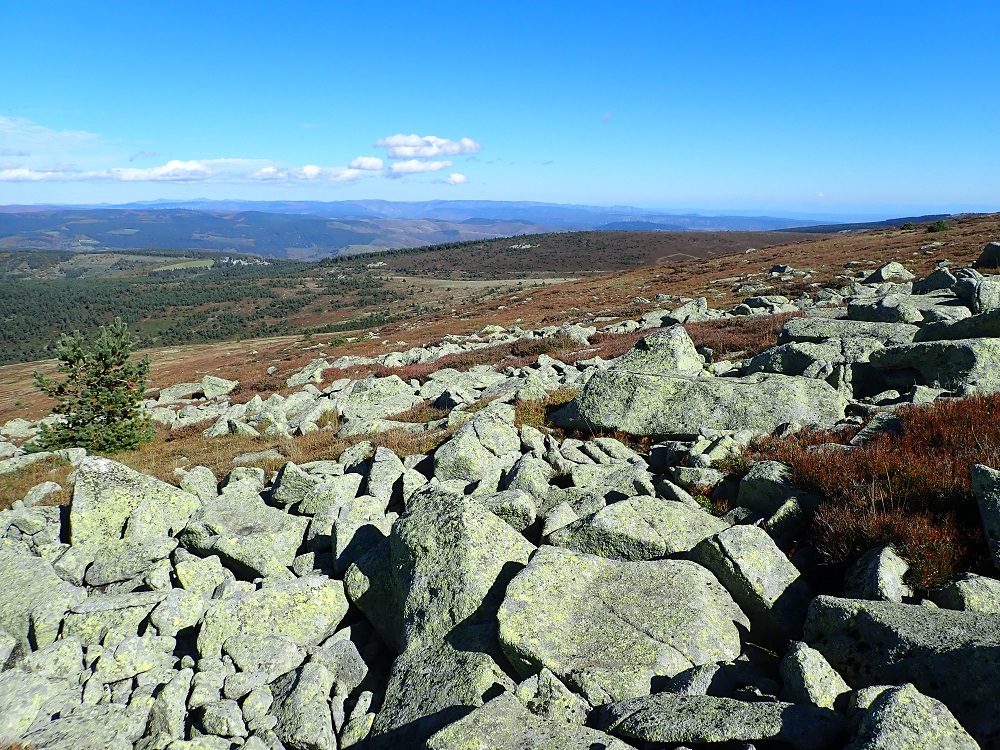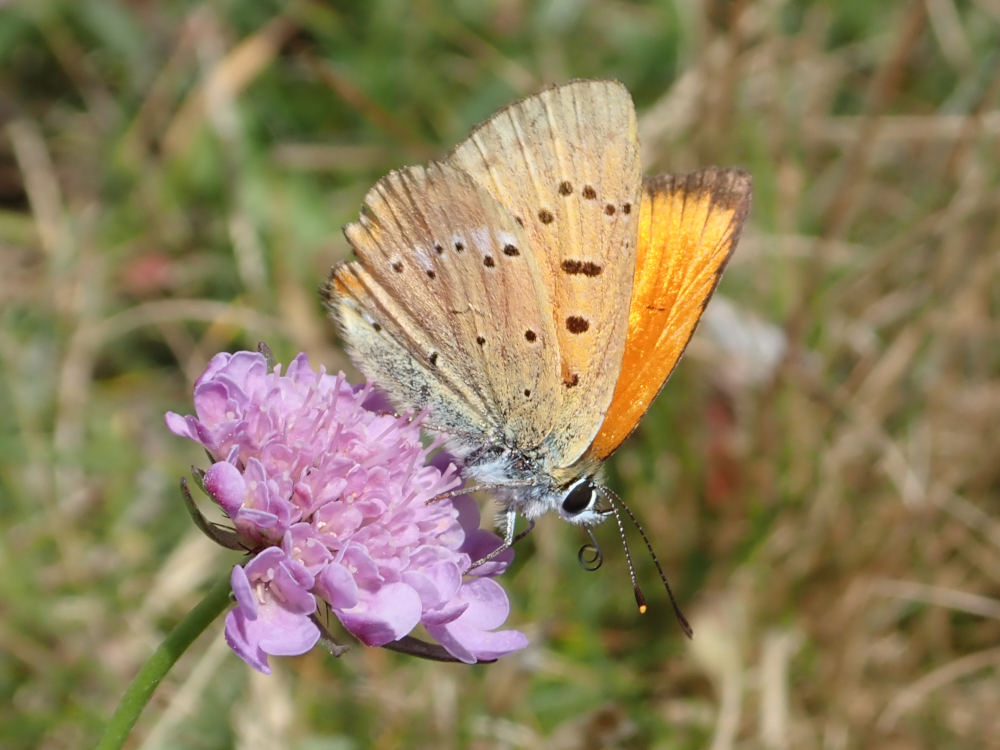The mountains of Mont Lozère (1,699m) and Mont Aigoual (1,565m) are the two highest summits in the Cévennes. Both are characterised by granite outcrops and form high plateaux where Montane flora and fauna can be found close to the Mediterranean region.
The slopes of Mont Lozère are characterised by heathland, dominated by Common Heather, Common Bilberries and Lingonberries (Vaccinium vitis-idaea) as well as numerous grasses.

Heather (Calluna vulgaris) and Bilberries (Vaccinium myrtillus)
Where streams emerge, rushes can be seen, as well as Sphagnum moss and the tiny carnivorous Round-leaved Sundew, which gains nutrition by feeding on small invertebrates in this this nutrient-poor environments.

Stream bordered by Sphagnum and rushes

Round-leaved Sundew (Drosera rotundifolia)
The summit itself is barren and windswept, with only small pine trees growing at the harsher elevations. The emergent granite boulders and rock piles on the plateau provide shelter and breeding sites for upland bird species such as Water Pipits (Anthus spinoletta) and Ring Ouzels (Turdus torquatus).

Dwarf pine

Granite boulders

Pine forest

Crested tit (Lophophanes cristatus)
On the southern slopes there are more extensive pine and beech forests, with their associated fauna. Here, specialist forest birds can be found, including Black Woodpeckers (Dryocopus martius), Red Crossbills (Loxia curvirostra) and Crested Tits.
Since the late 1970’s Capercaillies (Tetrao urogallus) have been reintroduced into the Scots Pine plantations here. However, despite these efforts, their population has fallen dramatically due to poor spring conditions and nest predation by wild boar. More successful reintroduction schemes have been implemented on Mont Aigoual, where European Mouflon (Ovis aries musimon) have been reintroduced on the southern slopes, sourced from populations in Corsica. They can be viewed from L’observatoire du mouflon, where they graze on the rocky escarpments. Also present in the region is the Red Deer (Cervus elaphus), which is now fairly common throughout the Cevennes.

European Mouflon information panel (Ovis aries musimon)

Mont Aigoual summit

Meteorological observatory
At the summit of Mont Aigoual is a meteorological observatory dating from 1894, which has recently been updated to include a museum dedicated to climate change. Outside of the observatory, Mont Aigoual features a more mixed geology than Mont Lozère to the north, with limestone at lower elevations and schists and granite towards its summit. This combination means it supports a wide range of habitats. Like Mont Lozère, the plateau features subalpine grasslands with upland butterfly species and bogs with Round-leaved Sundews and Marsh Orchids.

Scarce Copper (Lycaena virgaureae)

Black-veined white (Aporia crataegi)

Marsh Orchids (Dactylorhiza sp.) with Spagnum and Sundews